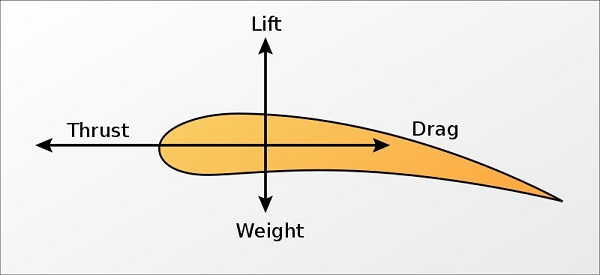<< aerodynamic coefficient | aerodynamic forces | aerodynamic heating >>
Back to: "A"
aerodynamic forces
- Definição1
- The forces on a body moving through a gaseous medium. In an aircraft, the thrust acts forward, drag acts rearward, and lift acts vertically upward. The weight of an aircraft produces a force that acts vertically downward. The tailplane also produces a net downward force that balances the weight around the center of gravity to provide longitudinal stability. The aerodynamic forces around a body moving through a gaseous medium are assumed to be proportional to the density of the medium (p), square of speed (V2), characteristics of the dimensions of the body (normally L2 ou S2), and Reynolds number raised to power n (Rn).
- Fonte1
- KUMAR, Bharat (ed.). An illustrated dictionary of aviation. New York: McGraw-Hill, c2005. 752 p.
- Fonte2
- INTERNATIONAL CIVIL AVIATION ORGANIZATION. Manual of aircraft accident and incident investigation. Part III: investigation. Montreal, 2011. (Doc. 9756 AN/965).
- Contexto
- Once aerodynamic forces exceed the strength of the tail, it will usually separate in a downward bending fashion.
- Subárea1
- Aerodynamics
- Português
- forças aerodinâmicas
- Imagem

The four forces on an aircraft: lift, weight, drag and thrust.

